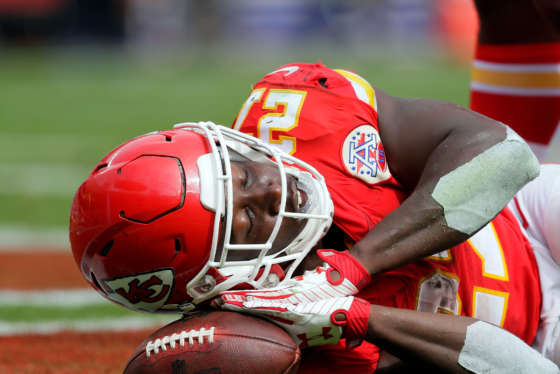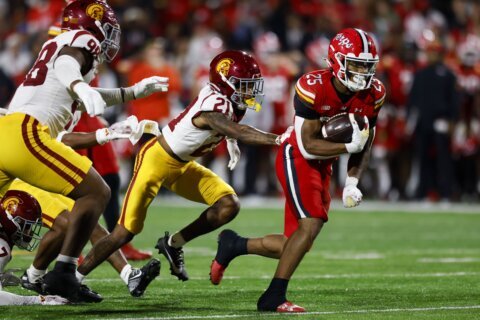WASHINGTON — The National Football League has many problems, but the one in Los Angeles has become glaringly twofold.
The Rams’ second stint in LA began last year and the Chargers joined them in the City of Angels this season. We’re only two weeks into the 2017 season and this much is obvious: Nobody cares about these teams less than Los Angeles.
The Rams and Chargers both played at home Sunday, the former at the iconic Los Angeles Coliseum and the latter in the nondescript StubHub Center — a 27,000 seat soccer stadium that’s comically dwarfish by football standards. The story in the aftermath of those games had little to do with each team’s losing performances on the field, but rather the lack of performance at the box office.
In fact, attendance for the Rams and Chargers was so low that the NCAA’s USC Trojans outdrew the two teams combined the day before.
No, really.
LA attendance:
Chargers – 25,381
Rams – 56,612
NFL combined – 81,993USC v. Texas – 84,714
— Bryan Fischer (@BryanDFischer) September 17, 2017
You read that right. A Top 5 team in the AP college football poll, hosting an unranked opponent, was a hotter ticket than young, up-and-coming Rams coach Sean McVay facing his former team and the Philip Rivers-Antonio Gates combo making their LA debut with history on the line.
The NFL should have anticipated this problem because they’ve already had to deal with it in this very market. The Rams and Raiders both left this city prior to the 1995 season because of lack of interest from both the fans and the municipalities responsible for housing them in quality stadiums. Many forget the Chargers were actually founded in Los Angeles and moved after one season. Yes, LA is the second largest media market in the country, which is why the league can’t quit trying to make it work. What the NFL keeps overlooking is that LA has what smaller markets don’t: Options.
Los Angeles isn’t Green Bay. In cities like LA and Miami, you’d better be damn good to distract locals from the many alternatives (i.e. great weather, beaches, and exceptionally beautiful people all over the place). Plus, in a transient city like Los Angeles there’s a high concentration of people with predetermined rooting interests, a notion validated by the amount of Redskins fans at the Coliseum and Dolphins fans at StubHub Center.
Which brings me to the real reason why the NFL can’t stay away from LA.
$55 million each: What 29 NFL teams will make in relocation fees over the next decade.
— Darren Rovell (@darrenrovell) September 18, 2017
Forget the bad optics of virtually empty stadiums. Never mind the nomadic existence of the Chargers, loitering in a soccer stadium for three years until they can shack up with the Rams to be the proverbial chump roommate paying half the rent for the smallest room in the apartment. Relocation is big business and these billionaire owners just want to line their pockets with a relatively paltry sum that amounts to the same annual cost as washed up veteran players like Haloti Ngata and Julius Thomas (each will make $5.5 million in 2017).
The Rams seem to be the early winners in the battle for LA but that’s like being the tallest of the Seven Dwarfs. The Chargers aren’t even putting up a real fight. The Bolts’ decision to, well, bolt for Los Angeles has cost them dearly in their former home of San Diego, thus leaving the Chargers –a franchise with no Super Bowl pedigree or exciting prospects for the future — as a team nobody really wants. The fact that the Chargers were in part named after USC’s rallying cry is a fitting extension of their status as little more than a novelty.
Don’t cry for the Rams and Chargers, though. They get a new stadium out of the deal and all that comes with it (like hosting a Super Bowl). But in the meantime, they have to live with being a punchline that poses no threat to stealing top billing from USC — the original “pro” team in Los Angeles. As we’ve seen from the NFL so far, that’s of no consequence to the owners, so long as the relocation check clears.
Let’s cash in the updated NFL Week 2 Recap.









